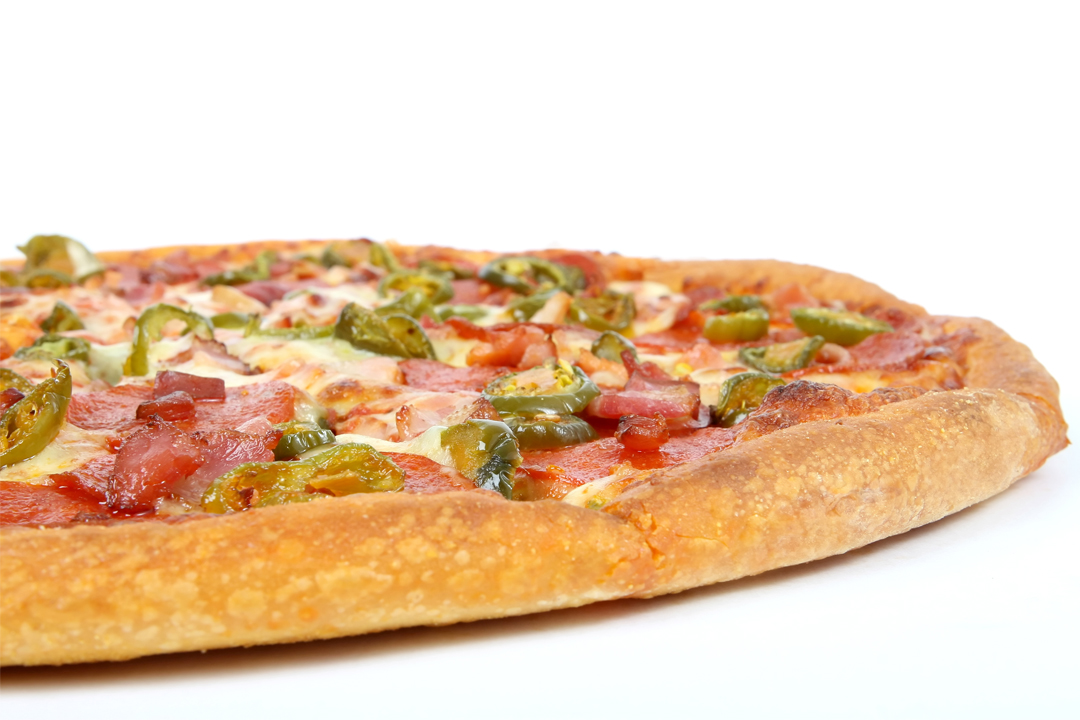
Reducing Food Waste in Foodservice
October 16, 2018 by Doreen Garelick, Dietetic Intern
Our intern Doreen attended a food waste summit for restaurants and compiled these tips to help food service operators redirect…
Nutrition 101
November 20, 2014

Dietetic Intern Kristina Carbo explains the science of the unique taste of pizza.
Pizza was born in Naples, Italy as a means to feed the working people food that was fast, convenient and inexpensive. It wasn’t until the end of World War II when soldiers returned home from overseas that pizza became a staple in American culture.
Today, pizza is regarded as a “high consumption food” being that 1 in 8 Americans eat it on any given day because of its versatility, convenience and low cost, but most important because of its unbeatable taste!
Whether you’re at a social gathering, casual lunch with friends, or just don’t feel like cooking dinner, pizza is there and it is irresistible. But have you ever stopped and wondered why it is so hard to resist reaching for that second or third slice?
The answer starts with our taste buds. The human tongue recognizes 5 different types of taste: sweet, sour, salty, bitter and umami. Certain substances in food stimulate our taste buds causing us to feel these different types of tastes. For example, sucrose in foods lets us tastes the “sweet,” hydrochloric acid allows us to taste the “sour,” sodium chloride causes the salty flavor in foods, quinine in foods allows us to taste the “bitter” and glutamate stimulates our umami taste perception.
We all have a general idea of what salty, sweet, bitter and sour taste like, but what exactly does umami taste like? Umami, meaning “delicious” in Japanese, is described as being rich and savory.
What is important about umami and glutamate is that they enhance flavor, causing people to eat and crave a particular food more. Many people are familiar with the term glutamate and know about its flavor enhancing abilities through its reputation in monosodium glutamate (MSG), but glutamate is also found naturally in certain foods and is therefore used by some culinary professionals as a natural flavor enhancer.
The more glutamate in food, the more flavorful it will be. Animal protein sources like beef, pork, chicken and fish are typically high in glutamate. Tomatoes and aged cheese, the two foods that serve as the foundation of pizza, are also two foods packed with plenty of glutamate!
A typical slice of pizza may have about 3 tablespoons of tomato sauce providing 140 milligrams of glutamate. A tablespoon of Parmesan cheese that could be used to season the slice can provide about 75 milligrams of glutamate! Right when we take that first bite of warm pizza crust topped with tomato sauce and cheese, our taste buds are stimulated by glutamate, and so we’re hooked and want more. Some common pizza toppings like mushrooms can even add more glutamate, enhancing the flavor. Talk about glutamate being the ultimate pizza-marketing tool!
Many culinary professionals also believe that foods with similar flavor compounds pair really well together. Tomatoes and mozzarella cheese, our beloved examples, both contain 4methylpentanoic acid (a flavor compound) making them a match made in pizza heaven!
It’s not your fault that you love pizza. Glutamate and umami are Cupid’s arrows going straight into our taste buds. However, pizza contributes to about 27% of total caloric intake on any day it’s consumed -- about a third of our total sodium intake and elevated saturated fat intake. Therefore, if you’re going to amass calories via pizza, try to get the most bang out of each slice by topping it with rich, beneficial nutrients. A few easy ways to eat a healthier pizza include:
The science behind why pizzas taste so great allows us to shamelessly love pizza, but we should also stay aware of how much of pizza we eat. Sometimes a traditional slice of pizza is what we need to satisfy our craving, but a few alternatives to adjust the nutritional content of the pizza we eat can allow us to enjoy more of what we want while giving us less of what we don’t need.

October 16, 2018 by Doreen Garelick, Dietetic Intern
Our intern Doreen attended a food waste summit for restaurants and compiled these tips to help food service operators redirect food waste from landfills.
Nutrition 101

Nutrition 101
September 26, 2018 by Doreen Garelick, Dietetic Intern
Ever notice headlines about rapid weightloss? Dietetic Intern Doreen Garelick looks deeper into a recent eye-catching headline to see if there's any truth behind it.
Connect
 Follow us on Twitter
Follow us on Twitter Friend us on Facebook
Friend us on Facebook Follow us on Pinterest
Follow us on Pinterest Follow us on Instagram
Follow us on Instagram Read our Blog
Read our Blog Watch videos on YouTube
Watch videos on YouTube Watch videos on Vimeo
Watch videos on Vimeo Connect with us on Linkedin
Connect with us on Linkedin Find us on Foursquare
Find us on Foursquare
Tweets by @SPEcertifiedBlog Search
Categories
SPE Certified Newsletter
Sign up for news on the latest SPE-certified venues, events and SPE updates.
We will never share your personal information with a third party.